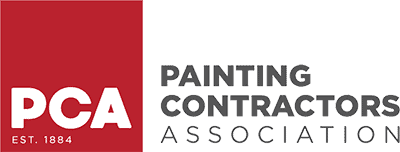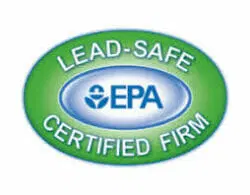Whether you’re a seasoned DIY enthusiast or a first-time house painter, the key to achieving a flawless and long-lasting paint job lies in proper surface preparation. Before you pick up that paintbrush, it’s crucial to learn how to repair damaged surfaces before painting. This will ensure your new coat of paint shines. Just as we said in our previous blog post, “How to Achieve a Professional Paint Finish,” imperfections in the surface will be magnified once painted. But fret not! In this guide, we’ll walk you through the essential steps.
How to Repair Damaged Surfaces Before Painting
Identifying the Damage
The first step in any successful painting project is to assess the condition of the surfaces you’ll be working on. Carefully inspect the walls, ceilings, or cabinets you intend to paint. Look out for cracks, holes, dents, peeling paint, or any other imperfections that might compromise the finished look. Taking the time to identify these issues upfront will save you time and frustration down the line.
Patch Up Those Holes and Cracks
Small holes and cracks can be a common occurrence, but they can be easily fixed with the right techniques. Start by cleaning the damaged area and removing any loose debris. For smaller holes, a lightweight spackling compound can work wonders. Apply it using a putty knife, smoothing it over the hole until it’s level with the surrounding surface. Once dry, sand it down for a seamless finish.
Larger cracks may require a bit more attention. Use a flexible patching compound that can move with the surface. Apply it generously to the crack and use a putty knife to flatten it out. Sand it down once dry, and you’ll be left with a smooth canvas ready for painting.
Addressing Peeling Paint
Peeling paint can be an eyesore and must be dealt with before applying a fresh coat. Begin by scraping off the loose paint using a paint scraper or putty knife. Sand the area to create a smooth transition between the remaining paint and the bare surface. Applying a primer over the exposed area will help the new paint adhere evenly.
Tackling Water Damage
Water damage is a common challenge, especially in areas prone to moisture. Before painting, ensure the affected area is dry to prevent further damage. For water stains, use a stain-blocking primer to prevent any discoloration from bleeding through the new paint. If the damage is extensive, consider replacing the damaged material before proceeding with your paint job.
Dealing with Dents and Dings
Dents and dings can be particularly bothersome, but fear not – they can be fixed! For minor dents, use a spackling compound to fill in the depressed area. Sand it down until it’s level with the surface. If the dent is deeper, you might need to use a patching compound. Apply it in thin layers, allowing each layer to dry before adding the next. Sand the patched area until smooth and paint-ready.
Smooth Out Uneven Surfaces
If you’re dealing with textured walls or surfaces, achieving a smooth finish can be challenging. Start by sanding down any high spots to create a more even surface. A high-quality primer can help level out the texture and provide a consistent base for your paint. Be sure to choose a primer with good adhesion properties to ensure your paint sticks.
Sealing Wood Imperfections
Wood surfaces can present their own set of challenges, such as knots, cracks, and grains that show through paint. Begin by sanding the wood to create a smooth surface. Apply a wood filler to any knots or cracks, and sand it down once dry. Using a primer designed for wood surfaces will help seal imperfections and provide a solid foundation for your paint.
A Final Word on Repairs
Remember, the key to a stunning paint job is the quality of your surface preparation. Taking the time to repair damaged areas will not only enhance the appearance of your paint but also extend its longevity. From patching holes and cracks to addressing water damage and uneven surfaces, each step you take in the preparation process is an investment in the final result.
So, before you dip that paintbrush, make sure your surfaces are in tip-top shape. By following these repair techniques, you’ll be well on your way to achieving a flawless and professional-looking paint job that you can be proud of.
Elevate Your Painting Project with Tar Heel Painters
Transforming damaged surfaces into pristine canvases is an art in itself. At Tar Heel Painters, we understand the intricate dance of repairing and painting like no other. With over 15 years of experience, we bring unparalleled expertise to every project, ensuring your surfaces are not just painted, but flawlessly revived.
Our skilled professionals specialize in restoring surfaces to their former glory. Whether it’s patching up holes, smoothing out imperfections, or addressing water damage, we go beyond ordinary repairs. We’re committed to creating a foundation that guarantees a stunning and enduring paint finish.
Your vision matters to us. We take the time to understand your unique needs and offer tailored solutions that fit your style and space. Our attention to detail, top-quality materials, and seamless execution ensure that your project is a masterpiece from start to finish.
Ready to transform your space? Contact us at (336) 502-8707 to schedule a consultation.





